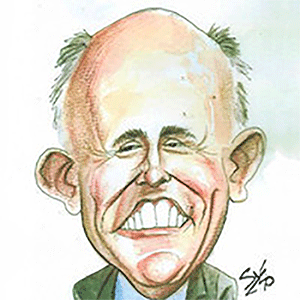Auto review: To the moon in the Rivian R1S EV family rocket ship
Published in Automotive News
YPSILANTI, Michigan — The Rivian R1S at first appears another trendy, boxy luxury SUV in the mold of the Land Rover Range Rover with smoked windows and black wheels.
Then you bury the throttle pedal. Good lord.
My Adventure Dual Max Performance model exploded onto I-275, its dual electric motors screaming like lit firecrackers. SCREEEEEEEEE! The monstrous 829 pound-feet of torque — more than a Ferrari F80 hypercar, for goodness' sake — buried my spine in the seatback. I was strapped to a 3½-ton rocket ship headed to the moon.
Ain’t startup automakers great?
The electric era has opened the door for the first generation of auto rookies in, well, awhile. Tesla’s prolific success inspired others, and RJ Scaringe’s Rivian has followed the Tesla model. Hire lots of Silicon Valley software engineers, design it like a smartphone on wheels, then give it cartoonish acceleration right out of a Warner Brothers Wile E. Coyote vs. Road Runner episode.
ZOT! I was at 80 mph before I could exhale.
It’s addictive and will drink battery just as you would if you put your foot to the floor (guilty) of the 702-horsepower, V8-powered Dodge Durango Hellcat. Thankfully, both have over 400 miles of range, so you have a lot of energy to play with — and which will help with the inevitable range anxiety that creeps in with electric vehicles.
With 410 miles of range, my R1S tester had some 20% longer legs than competitor Tesla Model X (or my Tesla Model 3 Performance), and I easily covered Metro Motown in a late October week of driving, including a round tripper to Ypsilanti. And, like the X and 3, R1S has access to Tesla’s Supercharger network (Rivian and Ford were the first to gain access this year) so I could hit the road confident that I had a reliable charger network close at hand.
Unlike, say, Electrify America, the largest non-Tesla fast charger network in the country.
To test the Rivian’s fast charge capabilities, I navigated to EA’s Novi Town Center shopping mall — the closest charger to my Oakland County house — where I could pick up delicious Crumbl cookies while waiting for a fast charge.
Upon arrival, I plugged into one of the station’s seven chargers and ... nothing. No charge. No screen alert to add my credit card.
I called the 800 number on the charger and the nice EA operator told me the station was under maintenance ... until mid-November. Oh. Plan a trip in the Rivian and it will navigate you to your destination just like Tesla and add stops on the way.
Let me suggest you select the RIVIAN and TESLA options on the screen, and you will have a reliable, trouble-free charging experience. Rivian helpfully adds a reliability score for any charging company (EA, EVGo, ChargePoint, etc.), but the reputation of proprietary Rivian/Tesla chargers is golden. And they are plentiful — especially Tesla infrastructure that I have used around the country. Just make sure you keep a Tesla adapter in your trunk to plug in.
Of course, anyone with 100 grand in their pocket for an SUV may not road-trip much — choosing commercial air travel or owning a general aviation aircraft. Still, part of Rivian’s brand is geared toward an adventure lifestyle — a departure from Tesla’s more performance-focused brand — and Rivian outfits national parks with Level 2, 240-volt chargers so you can add charge when you are at, say, Stinson Beach, California, where I found myself recently.
Its Rivian charger worked like a charm. It’s similar to the 240-volt charger that most owners will put in their home to keep the R1S charged for daily commutes.
If Tesla pioneered the performance EV, then Rivian pioneered the electric pickup. Both brands wowed with their flagships: Model S and R1T, respectably.
As a logical evolution from those cutting-edge products, Tesla and Rivian also pioneered the three-row SUV space with the Model X and R1S. In place of the bed out back, the R1S gains an impressive 105 cubic feet of cargo space (Model X has 85) with the second/third row seats stored. Access comes with a standard power liftgate, as well as air suspension that can lower the vehicle to make it easier to load big items.
Only this year are they finally being challenged by legacy luxe-makers with models like the Volvo EX90 and Cadillac Vistiq — and R1S has responded with a new 850-horsepower Tri-Motor/variant and significant updates to its electronic systems, infotainment, suspension, driving range, color offerings, wheels, smartphone connectivity, even interior cubby storage.
The EV startup pioneers are instantly recognizable — if quite different. The Tesla’s curvy egg shape and front trunk echo the Model S — then throws in gullwing doors for good measure. The boxy R1S, too, echoes the brand halo R1T pickup, with its upright grille, distinct vertical headlights and generous, 11-cubic-foot frunk space (something the Volvo and Caddy curiously exclude).
The Rivian doesn’t swing for the fences with gullwings — or even a Gear Tunnel storage bay like the R1T. Its cool Easter egg? A flashlight tucked into the driver’s side door — echoes of Rolls Royce umbrellas.
Open the door and the experience becomes more Tesla-like. Indeed, Rivian follows Tesla with a radical, smartphone-inspired, Apple-simple reinvention of the interior. Think huge console touchscreen and simple steering wheel with twin rollers for adjusting radio volume and cruise control speed. Want to adjust the mirrors and steering-wheel height? Touch a button in the screen and the rollers will do it for you.
The result is a clean, spare interior modeled after a sleek smartphone. And Tesla. I love this reimagining of the automobile — though with the Rivian and Tesla side-by-side in the garage, I occasionally got confused between their subtly different control operation. I used the R1S’s right controller, for example, to adjust the gap to the vehicle in front of me when self-driving down I-75 while the Tesla roller adjusts speed.
That’s right, Rivian wants to self-drive like a Tesla.
But it shies from Tesla’s boldness for a more measured approach. My Model 3 wants to drive everywhere on Full Self Driving regardless of road — and will navigate right to your destination’s door.
The Rivian will only self-drive on divided highways like Cadillac’s Super Cruise and Lincoln’s Blue Cruise. Note to Rivian: Tesla and the Detroit brands have moved forward and enable full hands-free driving, while the Rivian requires that you keep a hand on the wheel.
On a recent trip to Ypsilanti in a Chevy Silverado EV, I comfortably ate my lunch while the truck drove.
For its new generation, I appreciated the Rivian’s conservative approach relative to Tesla in the gear-shifting department as well. While Tesla’s second-gen Model 3 relentlessly pushes to strip the cabin of all mechanical controls — even putting the shifter in the screen — the Rivian maintains its tried-and-true stalk.
It made for easy, intuitive shifts without looking away at the screen — and a simple double-pull toward me engages drive-assist on freeways, just like first-gen Model 3/Y.
Tesla hasn’t lost its send of humor, though — it still offers whoopee cushion sounds and lots of games to play while you charge. Rivian also has a light touch.
A Sasquatch-like cartoon character called Gear Guard will help you with security measures like Pet Mode. And when I stepped out of my R1S, it played spooky Halloween sounds.
It brought a grin to my mug — which actually hadn’t left since my last, insane 0-60 sprint.
2025 Rivian R1S
Vehicle type: Battery-powered, all-wheel-drive, seven-passenger SUV
Price: $77,700, including $1,800 destination fee ($101,950 Adventure Dual Max as tested)
Powerplant: 92.5/109.4/141.5 kWh battery; dual/triple/quad electric-motor drive
Power: 533 horsepower, 610 pound-feet torque/665 horsepower (dual motor), 829 pound-feet torque (performance dual motor); 850 horsepower, 1,103 pound-feet torque (tri-motor); 1,050 horsepower, 1,198 pound-feet torque (quad motor)
Transmission: Single-speed direct drive
Performance: 0-60 mph, 2.5-4.3 seconds (Car and Driver est., 4.3 seconds est. as tested); top speed, 111-130 mph; towing, 7,700 pounds
Weight: 5,789 pounds (AWD as tested)
Fuel economy: EPA mpge 65–87; range, 270-410 miles (410 as tested)
Report card
Highs: Laugh-out-loud acceleration; impressive range, cargo space
Lows: Hands-free autonomous feature lags peers; no Android Auto/Apple CarPlay
Overall: 4 stars
____
©2024 www.detroitnews.com. Visit at detroitnews.com. Distributed by Tribune Content Agency, LLC.

















Comments